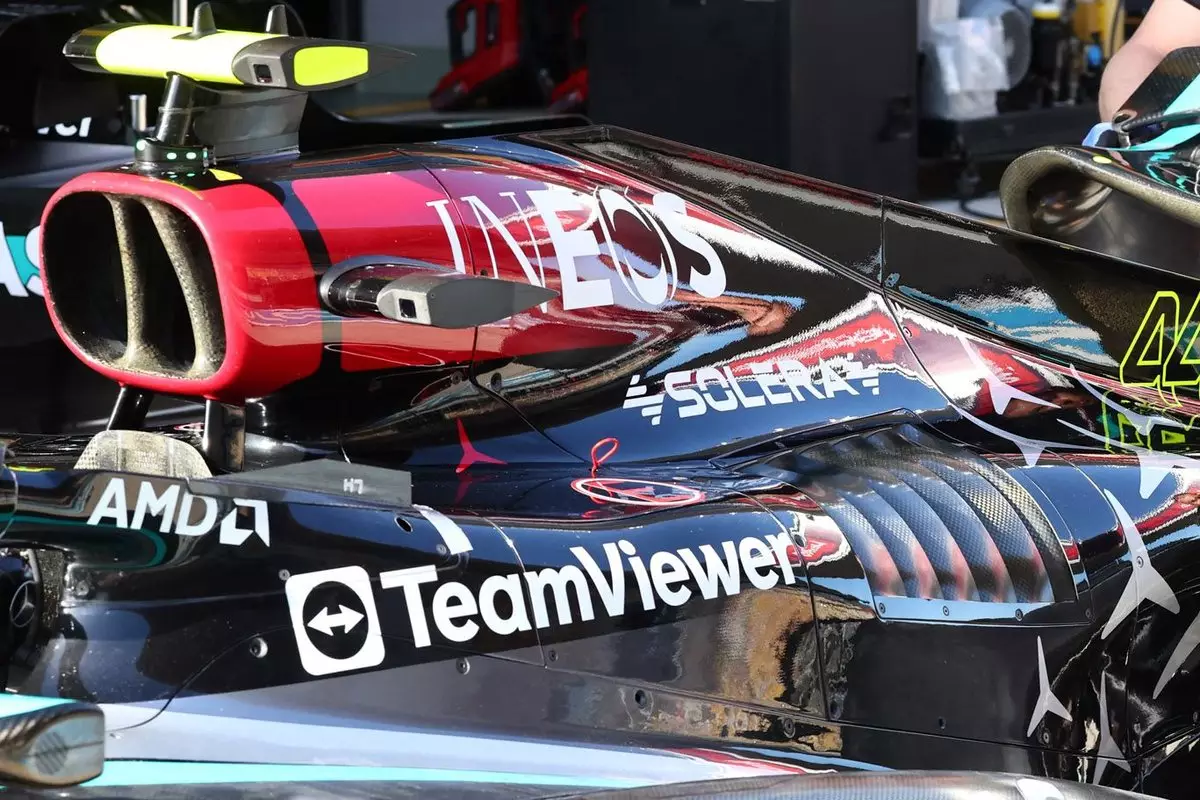In the world of Formula 1 racing, even the smallest aerodynamic changes can make a significant impact on a team’s performance on the track. While some teams may be hesitant to introduce major development packages for sprint race weekends due to limited track time, there are still ways to seek gains in other areas. Recently, three teams have made revisions to the area surrounding the driver and cockpit to improve airflow and overall aerodynamic efficiency.
Instead of focusing on major development packages, teams like Red Bull, Mercedes, and Williams have made subtle yet strategic changes in the cockpit area to enhance aerodynamics. Red Bull has reshaped the headrest behind the driver’s helmet to manage airflow separation, which can have downstream benefits. Mercedes and Williams, on the other hand, have made adjustments to the halo area to clean up airflow. Mercedes added small flicks on either side of the cockpit behind the Halo to generate small vortices that control flow out of the cockpit, leading to better airflow towards the rear wing. Williams, on the other hand, adjusted the geometry at the forward part of the halo to increase the angle of attack, improving airflow around the halo and reducing losses in the cockpit area.
According to Williams’ head of vehicle performance, Dave Robson, even minor changes in the cockpit area can have a significant impact on distributing airflow around the rest of the car. Robson emphasized the critical role of the cockpit area in improving aerodynamic efficiency and controlling flow to the rear and beam wing. The changes made by teams like Williams not only show that details matter in Formula 1 but also demonstrate that these adjustments can be done relatively quickly and cost-effectively. As Robson pointed out, these incremental changes are essential for staying competitive in the sport and can potentially have a greater effect than initially perceived.
Robson highlighted two critical factors that come into play when teams introduce upgrades in the cockpit area: the importance of paying attention to details and the ability to make these changes quickly and affordably. These incremental changes allow teams to continuously improve their aerodynamic performance without investing in major development packages. By focusing on small tweaks in critical areas like the cockpit, teams can fine-tune their airflow management and ultimately gain a competitive edge on the track.
The recent aerodynamic changes made by teams in the cockpit area of Formula 1 cars highlight the significance of paying attention to detail and making incremental adjustments to improve performance. While major development packages may be challenging to introduce during sprint race weekends, subtle changes in critical areas like the cockpit can have a significant impact on aerodynamic efficiency. As teams like Mercedes, Red Bull, and Williams continue to prioritize aerodynamic advancements, they demonstrate the importance of continuously evolving and refining their cars to stay competitive in the fast-paced world of Formula 1 racing.

